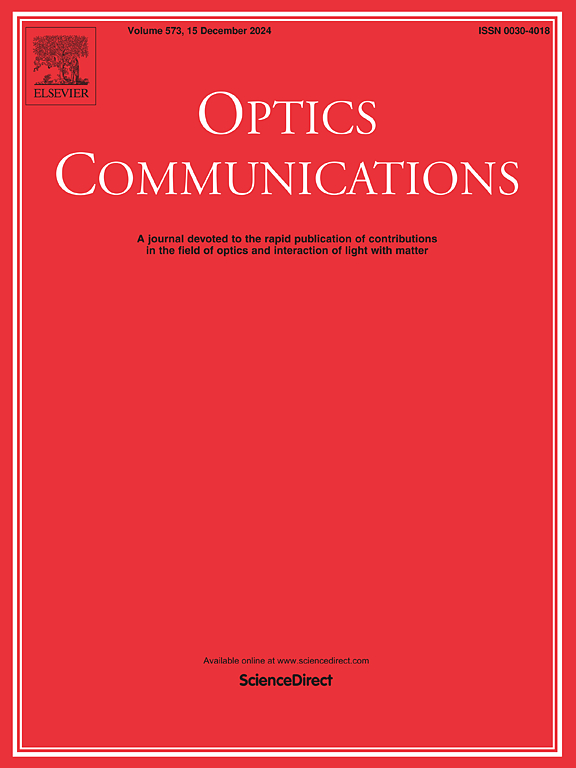Research on resource allocation of hybrid indoor VLC networks
IF 2.2
3区 物理与天体物理
Q2 OPTICS
引用次数: 0
Abstract
To address the resource allocation (RA) challenge in heterogeneous visible light communication (VLC) networks, this study develops an indoor VLC hybrid system comprising multiple VLC access points (APs), a single radio frequency (RF) access point, and a single infrared (IR) AP. A joint load balancing and power allocation strategy is proposed for the VLC/RF downlink, accompanied by an iterative algorithm and optimization framework tailored for the power allocation subproblem, which allocates power to each AP to maximize data throughput. The algorithm determines optimal power distribution through alternating solutions of dual variables. Furthermore, the effective capacity of a single user with varying quality of service (QoS) requirements in the IR uplink is examined, employing four distinct power control strategies: equal power allocation and Water-Filling algorithm, sub-channel independent optimization algorithm, and sub-channel joint optimization algorithm within simulations. Results indicate that this approach is agnostic to step size or initial variable values while offering enhanced convergence speed and performance compared to traditional subgradient methods. System capacity and fairness are notably improved alongside rapid convergence rates. Considering performance metrics based on system capacity, the sub-channel joint optimization algorithm is the optimal power control strategy.
求助全文
约1分钟内获得全文
求助全文
来源期刊

Optics Communications
物理-光学
CiteScore
5.10
自引率
8.30%
发文量
681
审稿时长
38 days
期刊介绍:
Optics Communications invites original and timely contributions containing new results in various fields of optics and photonics. The journal considers theoretical and experimental research in areas ranging from the fundamental properties of light to technological applications. Topics covered include classical and quantum optics, optical physics and light-matter interactions, lasers, imaging, guided-wave optics and optical information processing. Manuscripts should offer clear evidence of novelty and significance. Papers concentrating on mathematical and computational issues, with limited connection to optics, are not suitable for publication in the Journal. Similarly, small technical advances, or papers concerned only with engineering applications or issues of materials science fall outside the journal scope.
 求助内容:
求助内容: 应助结果提醒方式:
应助结果提醒方式:


